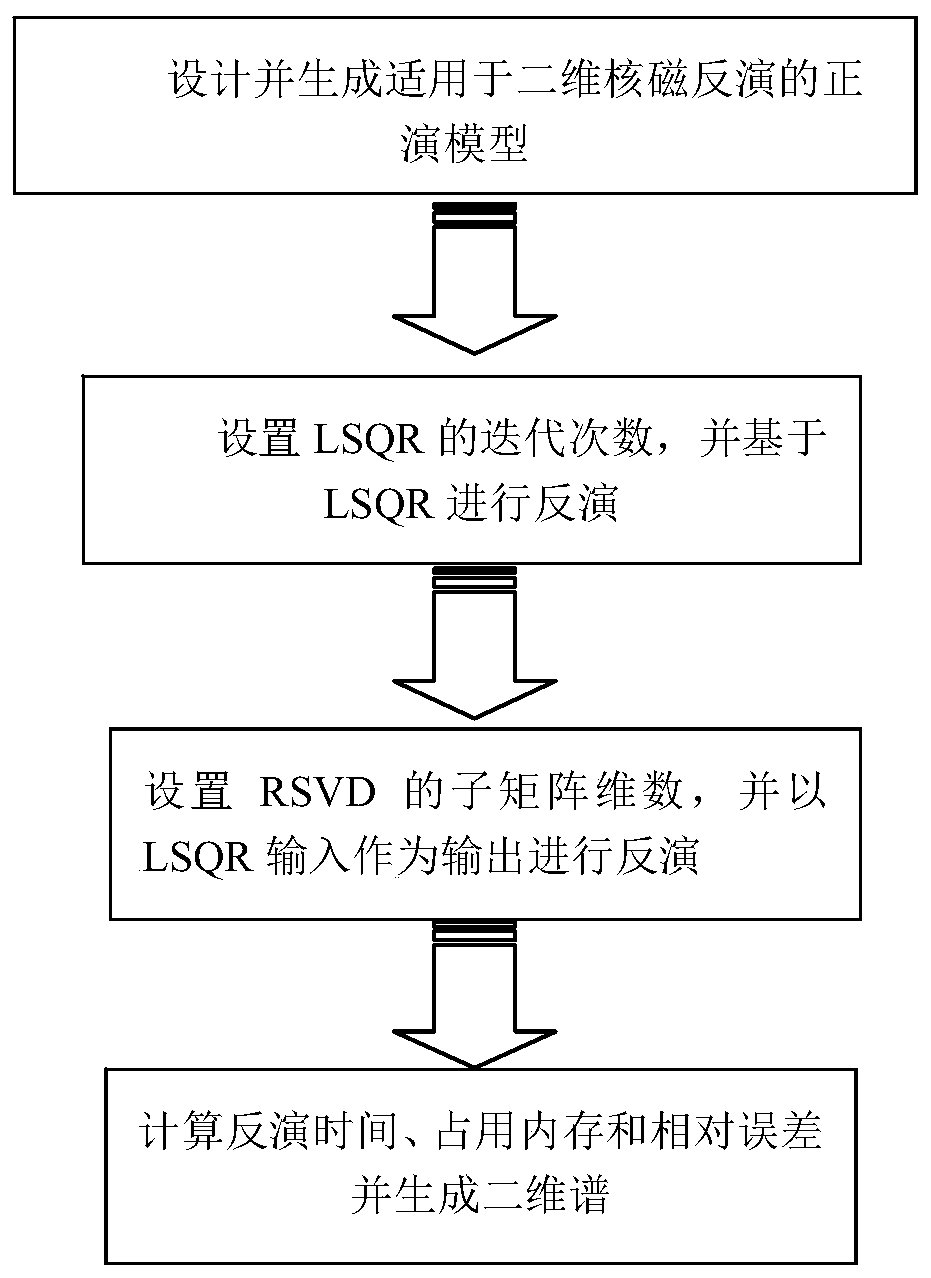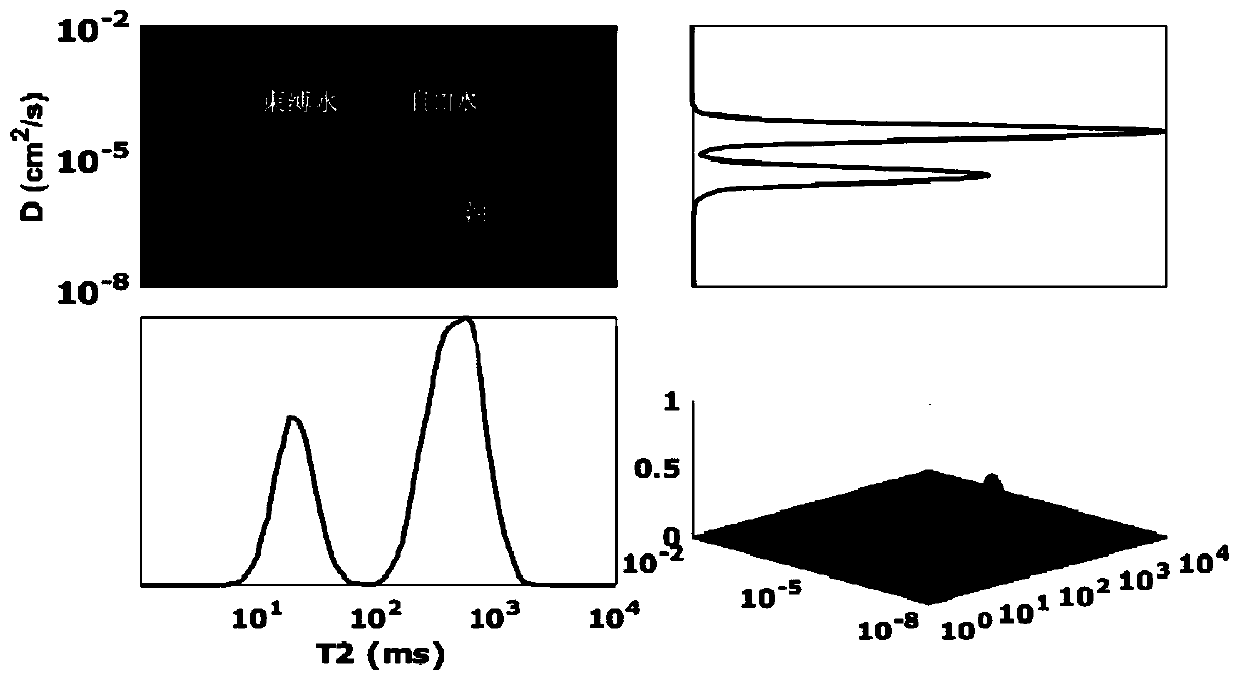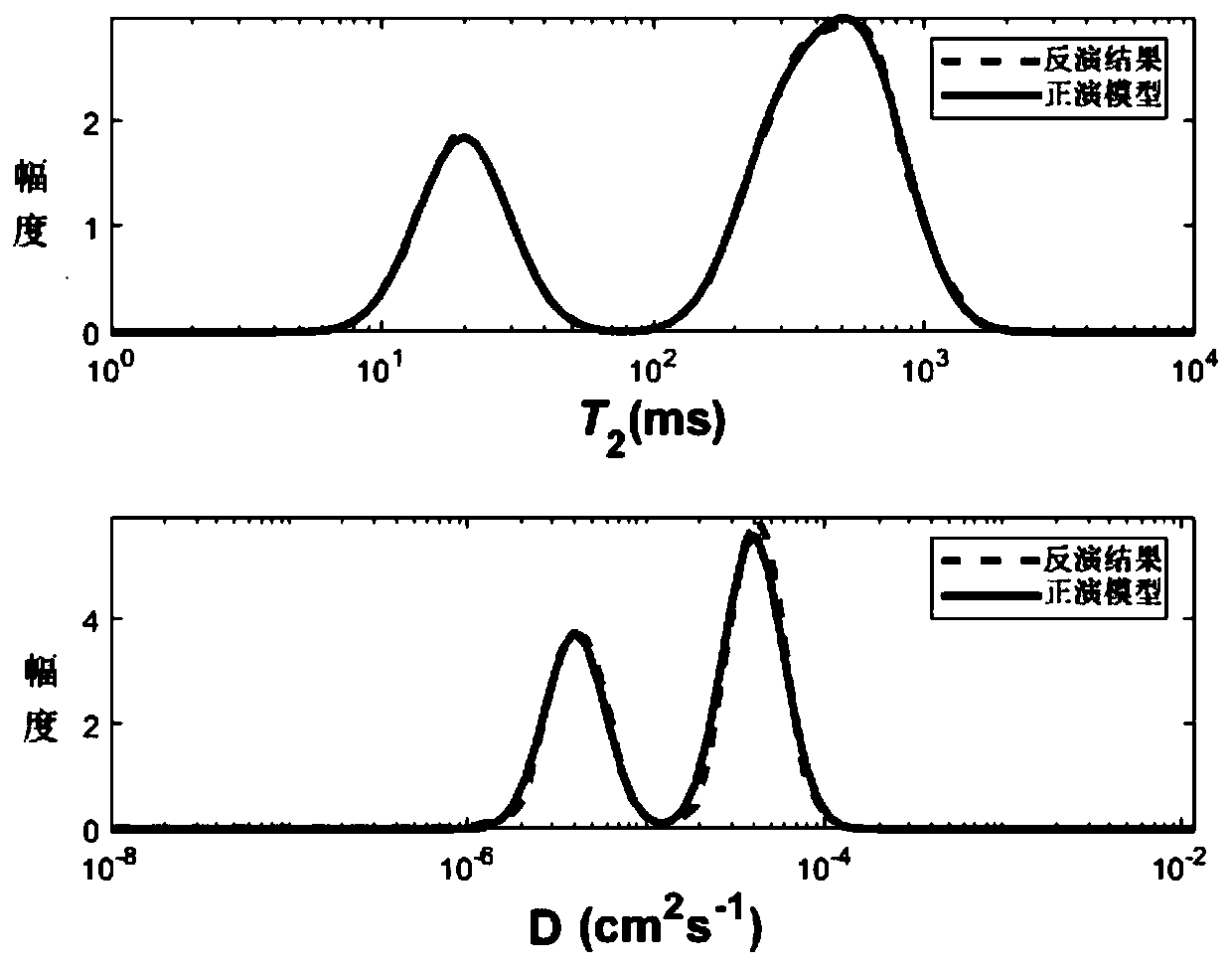Two-dimensional nuclear magnetic resonance rapid inversion algorithm based on LSQR-RSVD
An inversion algorithm and nuclear magnetic resonance technology, applied in the field of two-dimensional nuclear magnetic resonance fast inversion algorithm, can solve problems such as unfavorable multi-dimensional nuclear magnetic resonance logging to promote real-time inversion, increase hardware cost, reduce computing efficiency, etc., and reduce computing time. and hardware costs, reduce memory requirements, and speed up inversion
- Summary
- Abstract
- Description
- Claims
- Application Information
AI Technical Summary
Problems solved by technology
Method used
Image
Examples
Embodiment Construction
[0029] Below in conjunction with accompanying drawing and specific embodiment the present invention is described in further detail:
[0030] A fast two-dimensional NMR inversion algorithm based on LSQR-RSVD, the process is as follows figure 1 shown, including the following steps:
[0031] Step 1: Construct a two-dimensional model of fluid subject to Gaussian distribution, including oil-water model and gas-water model.
[0032] Specifically, for porous media, 2D NMR echo trains can be acquired by a CPMG pulse sequence with an echo interval of TE, a wait time of Tw, and a diffusion coefficient of D under a gradient field. 2D NMR signal can be written as: b(t,T E , T w )=∫∫f(x,y)K 1 (x)K 2 (y)dxdy+ε, for (T2,D), (T1,T2), (T1-D) different inversion targets, K 1 (x)K 2 (y) can be the kernel function of the inversion parameters respectively, for T 2 -D inversion, x=T 2 , y=D, to T 2 -T 1 Inversely speaking, x=T 2 , y=T 1 , to T 1 -D inversion terms, According to ...
PUM
 Login to View More
Login to View More Abstract
Description
Claims
Application Information
 Login to View More
Login to View More - R&D
- Intellectual Property
- Life Sciences
- Materials
- Tech Scout
- Unparalleled Data Quality
- Higher Quality Content
- 60% Fewer Hallucinations
Browse by: Latest US Patents, China's latest patents, Technical Efficacy Thesaurus, Application Domain, Technology Topic, Popular Technical Reports.
© 2025 PatSnap. All rights reserved.Legal|Privacy policy|Modern Slavery Act Transparency Statement|Sitemap|About US| Contact US: help@patsnap.com



